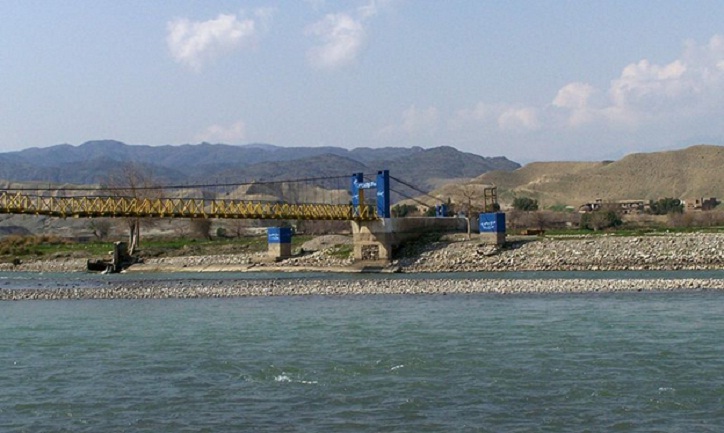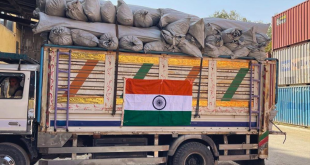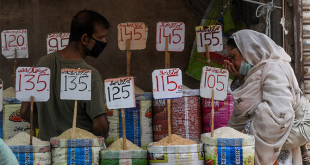By Glen Hearns-There is no other substance that we know of that is as powerful and magical as water for humans. Water makes up about 70% of our body weight and is essential to our health. Physically, we humans need about 5-8 liters of water a day (consumed as water or through food). Our bodies require water to thrive and while a person may go weeks without food, we can only last several days without water. Indeed, water is essential to all forms of life on Earth. But water is more than the physical need to survive. It has powerful spiritual dimension in our lives that can draw us together. All of the main religions use water as part of their spiritual cleansing, for example “wudu” ablution in Islam.
The use of water for spiritual cleansing should come as no surprise, water is a miraculous molecule. Water is the only known substance to exist naturally and abundantly on the Earth’s surface in all three states: gaseous (vapour and clouds), liquid (rivers and lakes) and solid (ice and snow). Moreover, it can exist in all three states together, for example when the snow and glaciers melt in the mountains and there is moisture in the air. Moreover, the fact that it exists as a liquid on the Earth’s surface is an oddity in itself. Based on it physical dimensions (its molecular weight and density measurements) it should be a gas. As is the case with the very similar compound hydrogen sulphide (H2S) which is almost twice as dense as water (H2O). Also, there are very few substances where the solid form can float on the liquid form, as ice on water. Water is special in that is has a very high boiling point, melting point, and viscosity compared to otherwise similar liquids, and thus a wide range of temperatures (0-100°C) where it behaves a liquid. It also has an uncharacteristically high specific heat capacity, making it a good heat storage medium. Many people are aware of the moderating influence that oceans and large lakes have on temperature in surrounding areas. However, it is less appreciated that water vapour in the atmosphere assists the trapping of solar radiation making the average temperature at the Earth’s surface a comfortable 15°C, instead of a chilly -18°C if no water vapour existed. Water is an excellent solvent allowing many things like nutrients to dissolve in it. It also can act either as an acid or an alkaline solution depending on the surrounding environment. Many of these fascinating properties are due to the intense bonding that occurs between the hydrogen atoms of one water molecule and the oxygen atom of another. While other molecules experience a similar “hydrogen bonding,” water has the most intense form.
Fortunately, water is the most abundant molecule on Earth. Unfortunately, the amount available for human use is rather limited. Most water, more than 96%, is found in the vast oceans and is not freshwater. While advances are being made to desalination of the oceans it remains an expensive and energy intensive option for obtaining freshwater. Another 1.7% lies in the massive polar ice caps and while it is fresh water and good for consumption, is for all intense and purposes “unavailable for our use”. There have been some schemes to tow icebergs to areas where freshwater is needed and harvest them, but this has remained “impractical”. Some water, of course, is in the atmosphere in the form of clouds and water vapour. In some areas of the world, like the desert coastal areas of Chile, water harvesting from morning clouds are being done rather effectively. However, the amount of water collected is still on a very small scale. There is about another 1.7% of the Earth’s water in groundwater, and about half of that is salty and non-useable. It is not possible to access and use all of the fresh groundwater as some will always stay in the formations attached to the rock. Rivers and freshwater lakes, where the bulk of our extraction comes from represent less than 0.01% of all the water. At any one time there is thus a limited amount of water available for our use, and this also has to be shared with the other natural users like forests, plants, animals etc.
Fortunately, the Earth’s water is in a continual cycle and moves. It evaporates from large water bodies, primarily the oceans, as well as from plants through evapotranspiration. It then exists as water vapour, or clouds, for a brief time before it falls as rain or snow. If it falls as rain it will move into the soils and ground and form groundwater, or it may run along the surface forming streams which join together to form rivers and often flow to the oceans or lakes where the water can evaporate again and the cycle continues. As the Indian poet Tagore says “The river flows as a never-ending sacrifice to the sea”.
If the water falls as snow it will stay solid until it melts and forms liquid water to enter into the ground or add to the rivers. For example, the bulk of the precipitation that occurs in winter over the Hindu Kush mountains in Afghanistan originates from the Mediterranean Sea and eventually either reaches the ocean through the Indus Basin, or inland areas such as the Aral Sea or the Hamouns of the Sistan. There it will evaporate to continue the cycle. In this way, it is difficult to say that “water” belongs to any specific country or place because it always in transition moving from one place to another in a perpetual cycle. The hydrological cycle makes water a very special resource: “A man cannot bath in the same river twice, as the second time he goes to bath the water in the river has changed”
With so many phenomenal properties and given its relative limited availability in many parts of the world it is not surprising that in 2008 the International Law Commission determined that water cannot be treated as other resources due to its “vital nature” for our survival. Indeed, under international law water is treated slightly different than most other resources which are not as mobile.
In general, as nations grew and began to develop they reached a stage where the development in one nation state could affect a neighbouring nation state. International resource and environmental laws have evolved to deal with these issues. International law acknowledges the rights of states to develop their resources to meet their needs, but they should not significantly impact the ability of other states in the process. One neighbour can tend to his garden however they like, providing it does not harm another neighbour’s garden in the process. This concept balances the right of development with the duty not to cause harm in the process. However, there are many things which are mobile and therefore difficult to control. Air pollution from one country can move across state borders and pollute another country, for example. It may indeed be impossible to have power plants or manufacturing unless some air pollution is created and this may drift into a neighbouring country. Consequently, the principle emerged that “in developing resources significant harm should be avoided to neighbouring countries”. This also applies to water and rivers which are international in nature.
Transbounadry water is considered as those rivers that form boundaries between countries, such as the Panj River between Tajikistan and Afghanistan; rivers that cross over into other countries, such as the Kabul River crossing over into Pakistan; and lakes that may also form a boundary or be shared by different countries, such as Lake Victoria in Africa which is shared by Uganda, Tanzania, Burundi and Rwanda. Transboundary waters also relates to aquifers (groundwater areas) which are split between two or more countries. A famous example is the South American Guarani aquifer shared by Brazil, Argentina, Uruguay and Paraguay.
In the case of transboundary rivers and lakes there are well developed legal mechanisms to address the sharing of the water. The primary instrument is the United Nations Convention on the Non-navigational uses of International Watercourses which was created in 1997 and became a legal global convention in August 2014 when Viet Nam was the 36th country to ratify it. The cornerstone of the convention, and indeed international law of transboundary rivers and lakes, is the principle of equitable and reasonable use which outlines that states/nations sharing an international watercourse will use the water in a fair and reasonable way, and will cooperate to optimally and sustainably use the water as well provide adequate protection to the water resources.
Determining what means “fair and reasonable” is for the countries to decide as each situation is different. However, it should include factors such as “where the water originates”, “the relative size of the basin in each country”, “the relative population in each country in the basin”, “the development level of the different countries”, “potential access to alternative sources of water”, “efficient use of water”, “protection of the water”, “the transboundary effects of using the water,” and “present and future uses” amongst other things. International law of water also includes the duty to do “everything possible to avoid causing significant harm” to other states sharing the basin waters. However, if significant harm does occur the states should cooperate to do everything that is feasible to stop the harm from occurring. To do everything to avoid “significant” harm means talking to your neighbour in advance of building infrastructure that might negatively affect them. This does not mean that your neighbour can “stop” your project, but it does mean that if they have concerns or suggestions of how to make the project better you must listen to them and consider them in good faith. If you do that, and you consider that the project is still “fair and reasonable” taking into account all the different factors then you are within your rights to carry on with the project.
What is important to recall in international water law is that water, for the most part, is only a visitor in your country and will soon move on to another country so it really demands cooperation and dialogue to manage the resource appropriately and sustainably for future generations. Water thus draws us closer together.
 Afghanistan Times Latest News and Analysis from Afghanistan and the Region
Afghanistan Times Latest News and Analysis from Afghanistan and the Region



